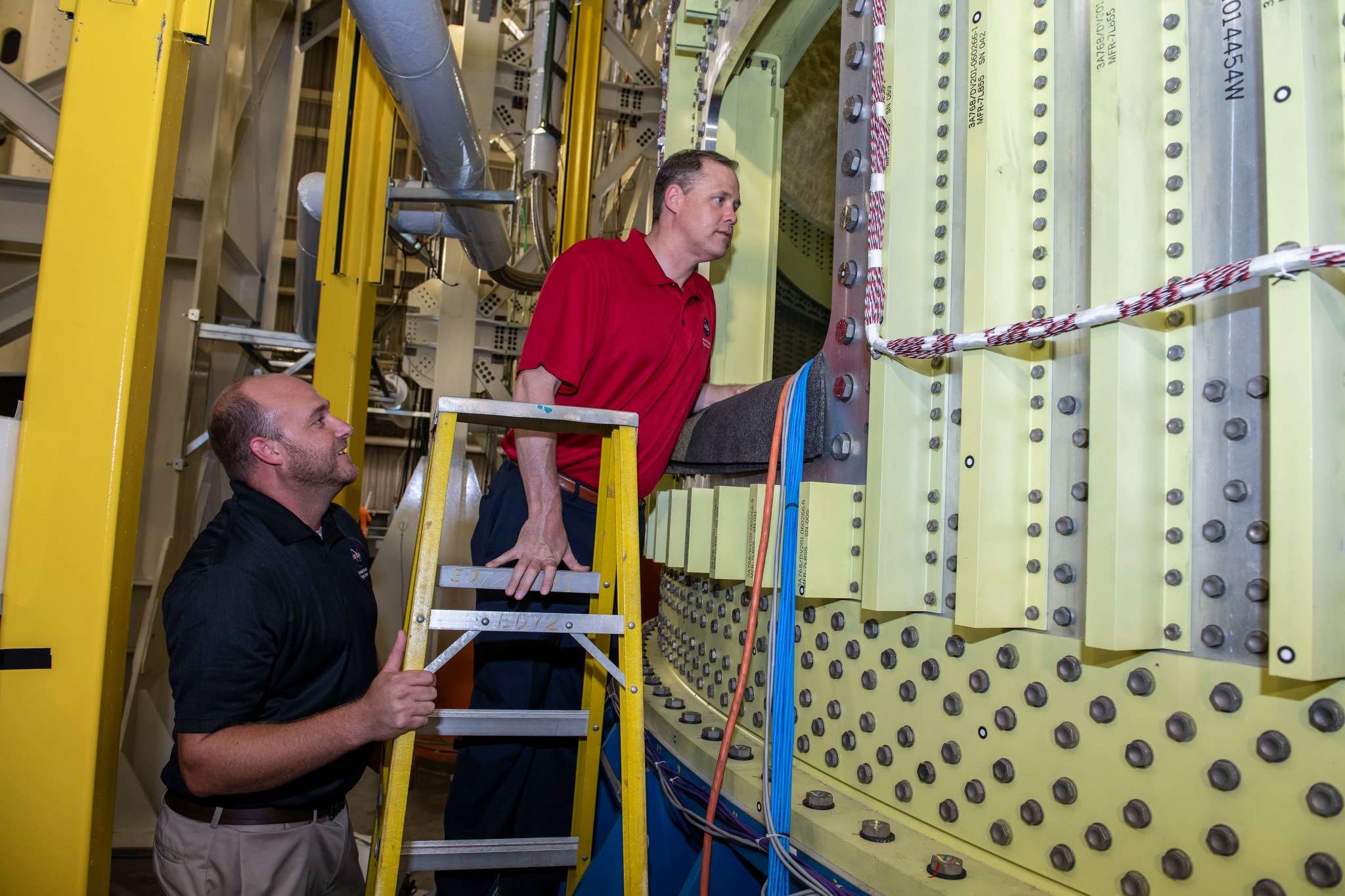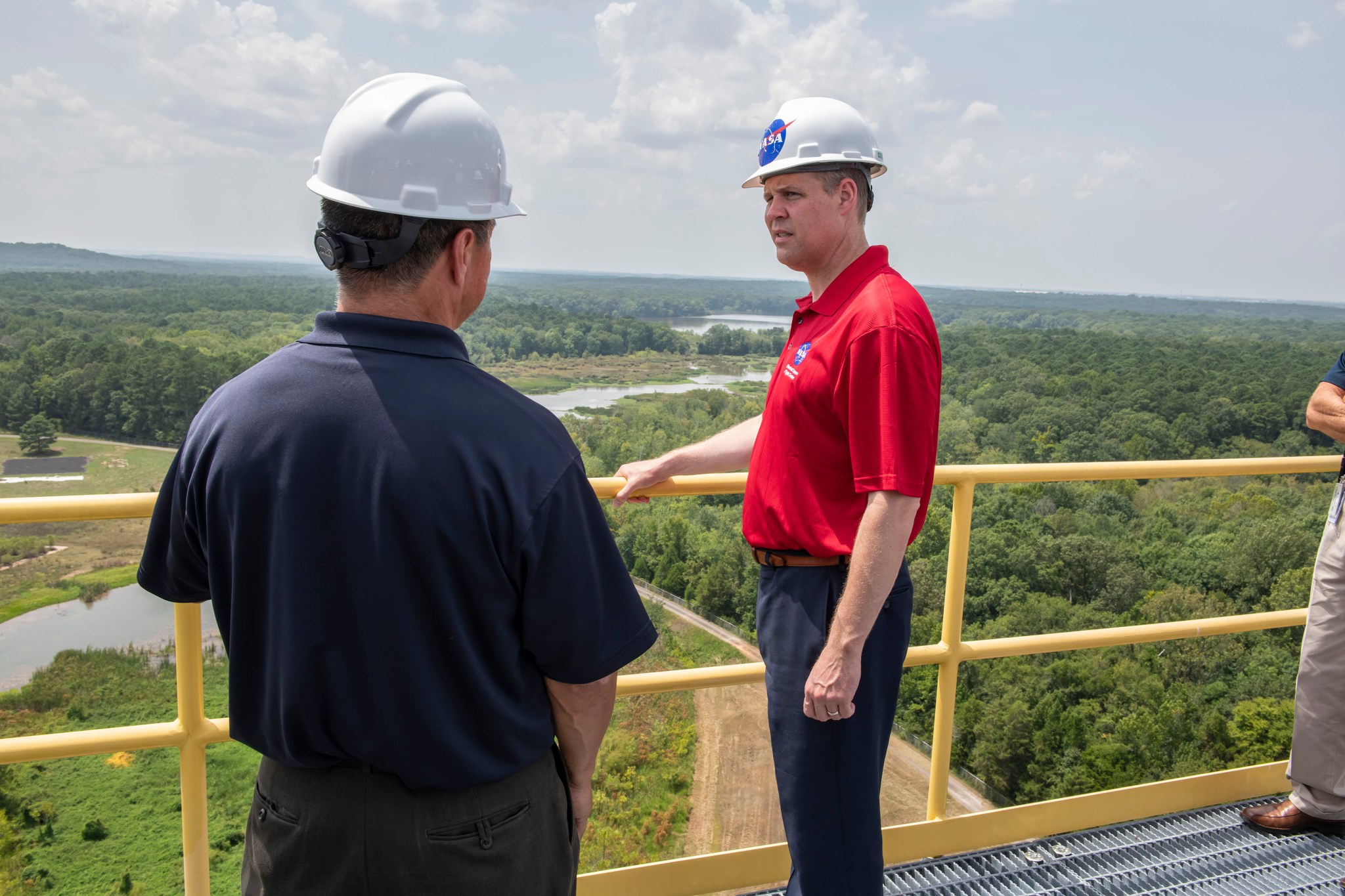Completing a three-day tour spanning three states, NASA Administrator Jim Bridenstine made his first visit to the Rocket City as the agency’s administrator on Wednesday, Aug. 15. Bridenstine spent the day at NASA’s Marshall Space Flight Center in Huntsville, Alabama, where he was briefed on space station science operations, technology development and Space Launch System (SLS) progress.

Significant progress has been made on SLS, with many of the rocket’s major elements finished or nearing completion for Exploration Mission-1, the first integrated test of Orion, SLS and the ground systems at Kennedy Space Center in Cape Canaveral, Florida.
“We are very excited about what we are about to do. We are about to launch the biggest rocket that has ever been launched. It’s going to carry more payload than any rocket that has ever been built before,” said Bridenstine. “What you’re doing here at Marshall is critically important for the country. We are grateful to all the families and all the folks that are working so hard on this project.”
Bridenstine took in the view from atop one of Marshall’s newest test stands, Structural Test Stand 4693, where the qualification test version of the liquid hydrogen tank for Space Launch System’s core stage will be positioned between the stand’s 221-foot-tall twin towers. He also saw the test version of the SLS intertank in the Structural Strength Laboratory and was briefed by engineers who are conducting structural analysis on the intertank to ensure it can withstand the forces of launch and ascent to get humans to space safely. The intertank is part of the rocket’s 212-foot-tall core stage and is one part of the largest launch vehicle test campaign at Marshall since the development of the space shuttle.
“What SLS represents is a key piece of American architecture that is going to enable us to do more than we have ever done before,” said Bridenstine. “We are going to use this rocket to get to the Moon and to build an architecture that will be sustainable.”
Bridenstine also toured the System Integration Lab and the Software Integration and Testing Facility, where Marshall is currently supporting end-to-end integrated avionics and software integration, check-out, verification, and validation for SLS.

“This entire architecture is going to get us to Mars. That’s a big part of what’s being done here at Marshall,” said Bridenstine.
In addition to touring Marshall’s facilities, Bridenstine spent time with the heart of the center — the people who make space exploration possible. “For me, it’s always been about our people,” said Jody Singer, acting center director of Marshall. “We’ve built a strong and talented team, and with the launch of SLS, we’ll be making history pushing the boundaries of space exploration. It was a privilege to share the progress of SLS and the work that we are doing here at Marshall with our new administrator.”
The Administrator concluded his visit with an employee town hall where he praised the Marshall workforce for their continuing contributions to nearly every facet of NASA’s mission, answered questions from the audience, and discussed the future of the space program and Marshall’s role in achieving the agency’s missions.
“I’m blown away by the history and the people here at Marshall. When you think about the history here, you think of the development of capabilities and technology that took humans to the Moon for the first time. All of this originated here in Huntsville,” said Bridenstine. “We want America’s space program to have the best and the brightest and I’m telling you they do, and they are right here in Huntsville.”
For more information on SLS, visit:
For more information on Marshall, visit:
Jennifer Stanfield
Marshall Space Flight Center
256-544-0034
jennifer.stanfield@nasa.gov


























